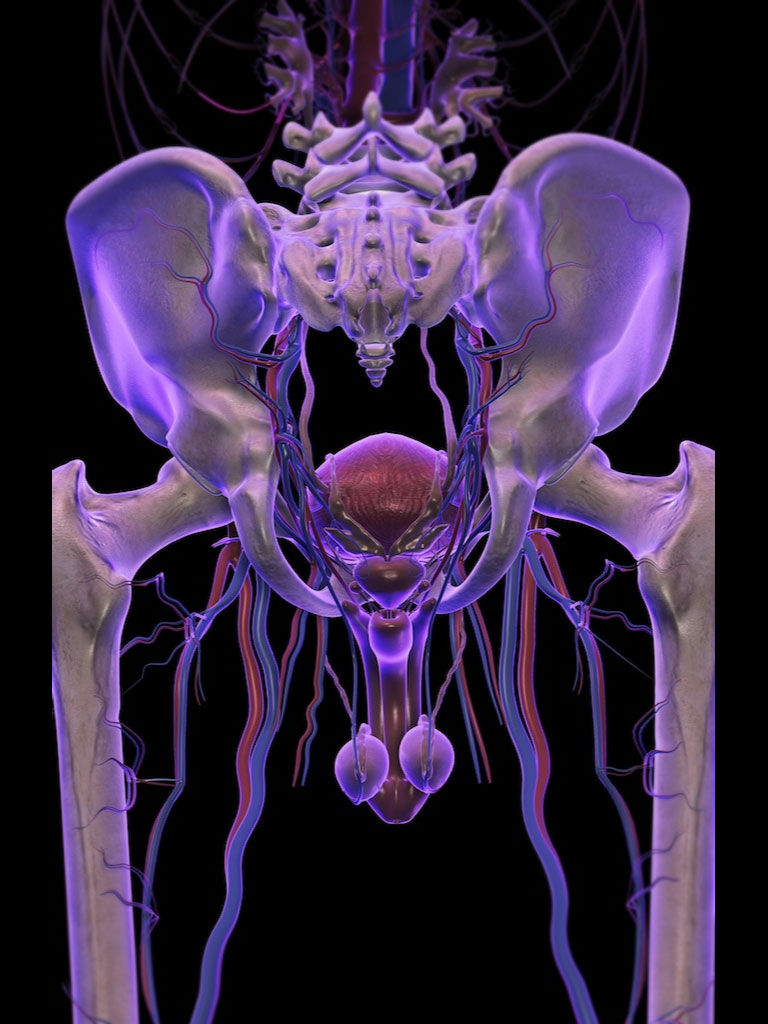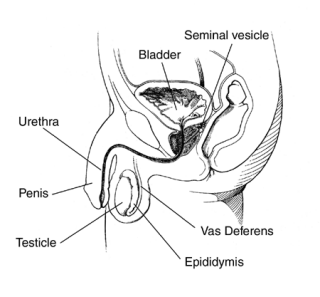About Testicular Cancer
Testicular cancer is cancer in one or both testicles. It is most often found in young men. This type of cancer can be treated and very often cured.
The testicles

The testicles (or testes) are part of the male reproductive system. In adult men, each one is normally a little smaller than a golf ball. They are
held in a sac of skin called the scrotum. The scrotum hangs beneath the base of the penis.
The testicles make the male hormones testosterone. They also make sperm. Sperm cells are carried from the testicles through small tubes
(the vas deferens) to the seminal vesicles. Fluid from the vesicles and from the prostate gland is added. During ejaculation (orgasm), this
fluid, now called semen, travels through a tube (the urethra) in the center of the penis and out of the body.

The testicles have several kinds of cells. The different cells may develop into one or more types of cancer. It is important to know which
kind of cell the cancer started from because these types of cancer are treated differently. They also differ in the chance of survival for the
patient (prognosis).
Main types of testicular tumors
- Germ cell tumors are the most common type of testicular tumors. Germ cell tumors grow in the cells that make sperm.
- Stromal tumors grow in other parts of the testicles like the cells that make hormones.
- Secondary testicular tumors are from cancer that has spread to the testicles from other parts of the body.
Each of the 3 types is explained in more detail below.
Germ cell tumors
More than 9 out of 10 of cancers of the testicles start in the germ cells. As used here, the term "germ" means seed. These are the cells that make sperm.
The 2 main types of germ cell tumors are seminomas and nonseminomas.
Seminomas start from germ cells of the testicle that make sperm. Within this group there are also subtypes. Seminomas usually happen in men between their late 30s and early 50s.
Nonseminomas tend to develop earlier in life than seminomas. They are often found in men between their late teens and early 40s. There are 4 main subtypes. Most tumors are mixed, having at least 2 different subtypes. But all nonseminoma germ cell cancers are treated the same way, so the exact type is not that important.
Carcinoma in situ: Testicular germ cell cancers may begin as a non-invasive form of the disease called carcinoma in situ (CIS). Carcinoma in situ may not always go on to become invasive cancer. It can take about 5 years for CIS to progress to the invasive form of germ cell cancer.
It is hard to find CIS because it often causes no symptoms and may not form a lump that you or the doctor can feel. Some cases are found by chance in men who have a testicular biopsy for some other reason, such as infertility.
Experts don't agree about the best treatment for CIS. Since CIS doesn't always become an invasive cancer, many doctors in this country suggest watching and waiting to be the best course of action. Stromal tumors
Tumors can also grow in the cells that make hormones and in the supportive tissues (the stroma) of the testicles. Stromal cell tumors are often benign (not cancer). They usually do not spread beyond the testicle and can be cured by taking them out. But a few stromal cell tumors spread to other parts of the body (metastasize). Metastatic stromal cell tumors have a poor outlook because they do not respond well to chemotherapy or radiation treatment. The 2 main types of stromal tumors are Leydig cell tumors and Sertoli cell tumors. Secondary testicular tumors
Secondary testicular tumors start in another organ and then spread to the testicle. Lymphoma is the most common cancer that does this. Among men over age 50, testicular lymphoma is more common than tumors that start in the testicle. Their outlook depends on the type and stage of lymphoma. The usual treatment is to remove the testicle. Surgery is followed by radiation and/or chemotherapy. In boys with acute leukemia, the leukemia cells can sometimes form a tumor in the testicle.
Cancers of the prostate, lung, skin, kidney, and other organs can also spread to the testicles. The outlook for these cancers is usually poor. That's because these cancers have generally spread widely to other organs, too. Treatment depends on the exact type of cancer.
|